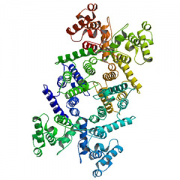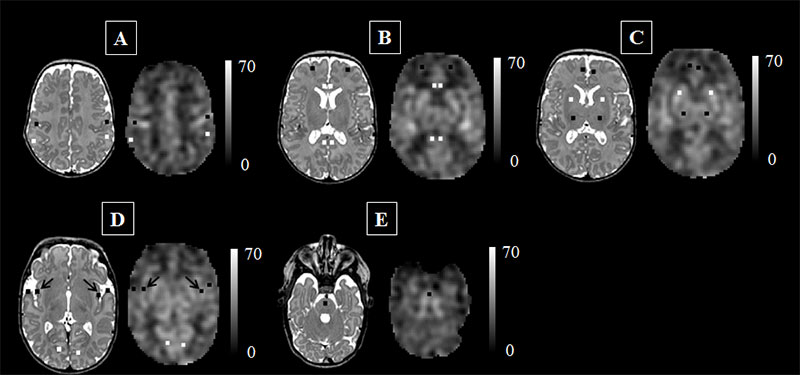Experimental drug shows promise for slowing cardiac disease and inflammation

Duchenne muscular dystrophy (DMD) is caused by mutations in the DMD gene, which provides instructions for making dystrophin, a protein found mostly in skeletal, respiratory and heart muscles.
Vamorolone, an experimental medicine under development, appears to combine the beneficial effects of prednisone and eplerenone – standard treatments for Duchenne muscular dystrophy (DMD) – in the heart and muscles, while also showing improved safety in experimental models. The drug does so by simultaneously targeting two nuclear receptors important in regulating inflammation and cardiomyopathy, indicates a small study published online Feb. 11, 2019, in Life Science Alliance.
DMD is a progressive X-linked disease that occurs mostly in males. It is characterized by muscle weakness that worsens over time, and most kids with DMD will use wheelchairs by the time they’re teenagers. DMD is caused by mutations in the DMD gene, which provides instructions for making dystrophin, a protein found mostly in skeletal, respiratory and heart muscles.
Cardiomyopathy, an umbrella term for diseases that weaken the heart, is a leading cause of death for young adults with DMD, causing up to 50 percent of deaths in patients who lack dystrophin. A collaborative research team co-led by Christopher R. Heier, Ph.D., and Christopher F. Spurney, M.D., of Children’s National Health System, is investigating cardiomyopathy in DMD. They find genetic dystrophin loss provides “a second hit” for a specific pathway that worsens cardiomyopathy in experimental models of DMD.
“Some drugs can interact with both the mineralocorticoid receptor (MR) and glucocorticoid receptor (GR) since these two drug targets evolved from a common ancestor. However, we find these two drug targets can play distinctly different roles in heart and skeletal muscle. The GR regulates muscle inflammation, while the MR plays a key role in heart health,” says Heier, an assistant professor at Children’s National and lead study author. “In our study, the experimental drug vamorolone safely targets both the GR to treat chronic inflammation and the MR to treat the heart.”
After gauging the efficacy of various treatments in test tubes, the study team looked at whether any could mitigate negative impacts of the MR on heart health. Wild type and mdx experimental models were implanted with pumps that activated the MR. These models also received a daily oral MR antagonist (or inhibitor) drug, and either eplerenone, spironolactone or vamorolone. Of note:
- MR activation increased kidney size and caused elevated blood pressure (hypertension).
- Treatment with vamorolone maintained normal kidney size and prevented hypertension.
- MR activation increased mdx heart mass and fibrosis. Vamorolone mitigated these changes.
- MR activation decreased mdx heart function, while vamorolone prevented declines in function.
- Daily prednisone caused negative MR- and GR-mediated side effects, such as hyperinsulinemia, whereas vamorolone safely improved heart function without these side effects.
“These findings have the potential to help current and future patients,” Heier says. “Clinicians already prescribe several of these drugs. Our new data support the use of MR antagonists such as eplerenone in protecting DMD hearts, particularly if patients take prednisone. The experimental drug vamorolone is currently in Phase IIb clinical trials and is particularly exciting for its unique potential to simultaneously treat chronic inflammation and heart pathology with improved safety.”
In addition to Heier and senior author Spurney, study co-authors include Qing Yu, Alyson A. Fiorillo, Christopher B. Tully, Asya Tucker and Davi A. Mazala, all of Children’s National; Kitipong Uaesoontrachoon and Sadish Srinivassane, AGADA Biosciences Inc.; and Jesse M. Damsker, Eric P. Hoffman and Kanneboyina Nagaraju, ReveraGen BioPharma.
Financial support for research described in this report was provided by Action Duchenne; the Clark Charitable Foundation; the Department of Defense under award W81XWH-17-1-047; the Foundation to Eradicate Duchenne; the Intellectual and Developmental Disabilities Research Center under award U54HD090257 (through the National Institutes of Health’s (NIH) Eunice Kennedy Shriver National Institute of Child Health and Human Development); and the NIH under awards K99HL130035, R00HL130035, L40AR068727 and T32AR056993.
Financial disclosure: Co-authors employed by ReveraGen BioPharma were involved in creating this news release.





